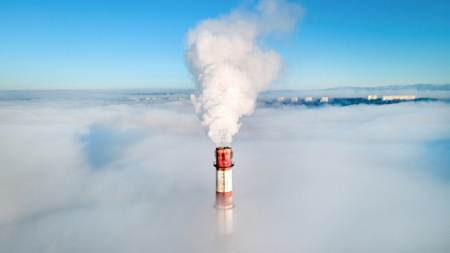
Russia’s struggle with pervasive air pollution in its industrial heartlands has prompted a significant policy shift, moving from a reliance on individual enterprise improvements to a nationwide system of emissions quotas. This strategic pivot, widely discussed and developed since 2016, gained urgency after initial attempts to curb pollution proved inadequate, despite considerable investments by industries in advanced environmental technologies.
The city of Chelyabinsk served as a critical case study, demonstrating that merely implementing Best Available Technologies (BAT) at major polluting enterprises was insufficient to significantly improve air quality in urban centers with multiple large industrial facilities. The realization that even with BAT adoption, city air often failed to meet health standards and public expectations, underscored the need for a more comprehensive approach: aggregate upper limits on key air pollutants.
This necessity led to the launch of the federal ‘Clean Air’ project, initially part of the national ‘Ecology’ initiative and now integrated into the ‘Environmental Well-being’ project, extending to 2036. The program aims for a more than 20 percent reduction in total air pollution, beginning with an experiment in 12 industrial cities, expanding to Sredneural’sk and Salavat by 2023, and eventually encompassing 43 cities by 2025. The core mechanism involves setting emissions quotas and establishing overall aggregate limits for pollutant releases.
The shift towards stricter environmental regulations became unavoidable. While the comfortable transition to BAT proved largely ineffective and intangible to the general populace, the move to emissions quotas emerged as a logical, albeit challenging, solution. This transition, however, faced early resistance from major corporations in 2016-2017, who sought to postpone the implementation of quotas. Nearly a decade later, the problem persists, now compounded by geopolitical restrictions impacting access to crucial technologies and financial resources, reinforcing the critical lesson that environmental issues cannot be deferred without mounting future costs.
Contemplating effective strategies, Russia has looked to international precedents, particularly the experience of the U.S. Clean Air Act of 1970 and its economically-oriented 1990 amendments. This legislation successfully leveraged market mechanisms, such as emissions trading, to incentivize pollution reduction. Smarter policy, as the thinking goes, involves learning from others’ successes and failures rather than repeating mistakes.
However, Russia’s current approach presents its own complexities. The varying lists of prioritized pollutants across the 12 initial experimental cities range from 11 to 36 substances, a stark contrast to the U.S. Clean Air Act’s initial focus on just six common pollutants. This suggests a potential overreach, with experts advocating for a phased implementation, starting with fewer pollutants and gradually expanding the scope as methodologies for quotas are refined over time.
A significant hurdle lies in the absence of robust economic mechanisms. Unlike the U.S. model, Russia currently lacks clear rules for the complete or partial crediting and trading of quotas within the experimental territories. This oversight prevents the creation of market-based incentives that could drive emissions reductions. Establishing clear regulatory frameworks for quota transfer and offsetting is therefore crucial to foster economic motivation and reduce transactional costs.
Another point of contention is the uniform application of the quota experiment, which began on January 1, 2020, and runs until December 31, 2026. This unified timeline appears equitable on the surface but is viewed as potentially unfair to companies that made substantial investments in modernizing their production and reducing environmental impact prior to the experiment’s launch. These proactive firms are now mandated to reduce emissions further, often at a significantly higher marginal cost per ton, compared to enterprises that had not previously invested in major eco-technological innovations. Penalizing early environmental leaders risks dampening future incentives for strategic green upgrades across the economy.
In such cases, a more equitable baseline, perhaps using pollution metrics from 5-7 years prior to the quota experiment, could provide a fairer starting point. Furthermore, current legislation allows for additional compensatory environmental measures if a company fails to meet its quotas. In the present geopolitical climate, with restricted access to advanced environmental technologies, re-evaluating and potentially expanding the scope for effective compensatory measures, such as strategic reforestation with species optimized for air purification and dust capture, becomes pertinent. These measures must be transparent and genuinely impactful, particularly for the populations in the affected cities.
The past decade unequivocally points to the necessity of emissions quotas. While globally proven in industrially developed nations and within the framework of the UN Climate Change Convention, its successful implementation in Russia requires overcoming significant internal and external challenges. Collaborative efforts between the Ministry of Industry and Trade, the Ministry of Natural Resources, and other stakeholders, alongside scientific and expert communities, are essential. The focus must shift from merely implementing BAT at individual enterprises to achieving concrete, aggregate reductions in air pollution. A flexible, step-by-step approach, potentially including temporary windows for effective compensation activities, could pave the way for the successful realization of the ‘Clean Air’ project across all 43 participating cities, ultimately contributing to the broader ‘Environmental Well-being’ national project.
